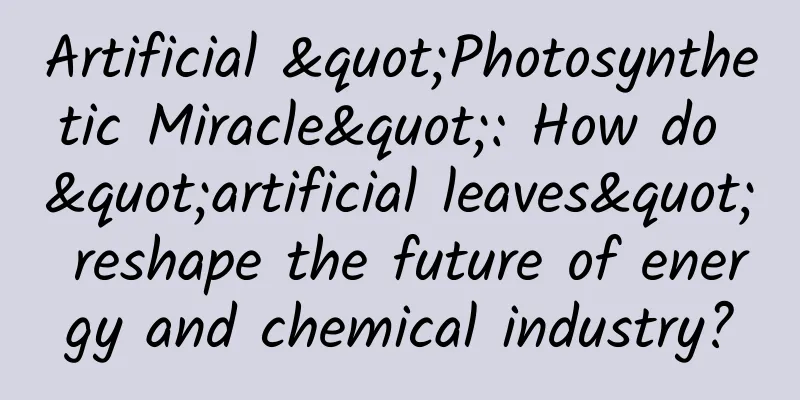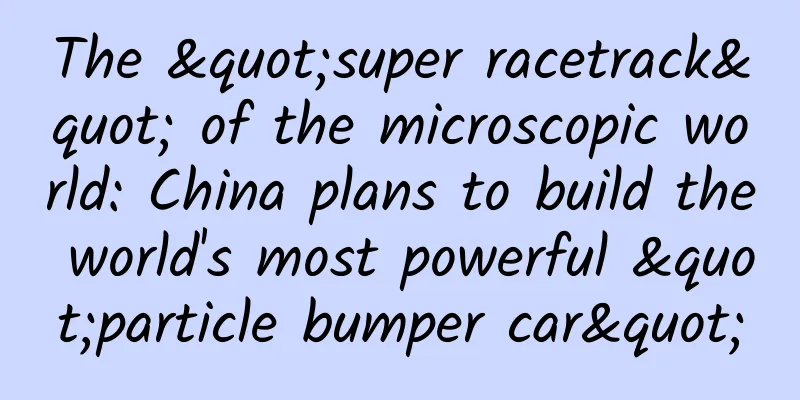Artificial "Photosynthetic Miracle": How do "artificial leaves" reshape the future of energy and chemical industry?

|
Author Duan Yuechu In the billions of years of life on Earth, plants have been quietly carrying out photosynthesis. This seemingly ordinary process is the energy foundation of the entire ecosystem. They use solar energy to convert carbon dioxide and water into oxygen and organic matter, which not only provides oxygen for life on Earth, but also lays the foundation for the food chain, and is the key to the prosperity of life on Earth. This magical natural process is also like an eternal revelation, inspiring humans to continuously explore new ways of energy conversion and utilization. Today, at a critical moment when the world is eager to explore sustainable energy solutions, an exciting scientific research result has illuminated the way forward for us. An international research team composed of top scientific research institutions such as the University of Cambridge in the UK and the University of California, Berkeley, has successfully developed a new "artificial leaf" device. The relevant research results were published in the top academic journal Nature Catalysis. This breakthrough instantly attracted global attention. The concept of "artificial leaves" has a long history and embodies the wisdom and efforts of countless scientific researchers. From the initial idea to the current technological breakthrough, every step is full of hardships. Its design inspiration comes directly from the photosynthesis of plants. It is an innovative material or device that uses solar energy to convert energy. Scientists have been working hard to overcome difficulties, hoping to efficiently convert solar energy into energy forms that can be used by humans, just like plants. The birth of the new "artificial leaf" is undoubtedly an important milestone in this long exploration process. The key to the sensation caused by the new "artificial leaf" lies in its unique and exquisite composition and structure. Its main body is a perovskite material that can efficiently utilize solar energy. This material has excellent photoelectric properties. Just like the chlorophyll of plants, it can keenly capture sunlight and convert it into chemical energy, providing a steady stream of energy for a series of subsequent chemical reactions. On the surface of the perovskite material, a uniquely shaped copper nanoflower catalyst is attached, which is the finishing touch of the entire device. Unlike most ordinary metal catalysts that can only convert carbon dioxide into single carbon molecules, the copper nanoflower catalyst has a petal-shaped three-dimensional structure. This special microstructure gives it extraordinary catalytic properties, enabling it to convert carbon dioxide into complex hydrocarbons containing two carbon atoms, such as ethane and ethylene. Don't underestimate these hydrocarbons, they are key raw materials for modern industry. From the production of liquid fuels to the synthesis of various chemicals to the manufacture of plastic products, they are indispensable. From the energy perspective, the changes brought about by the new "artificial leaves" are subversive. With the rapid development of global industrialization, human demand for energy has exploded. While traditional fossil energy meets the demand, it also brings many thorny problems. On the one hand, fossil energy is a non-renewable resource with limited reserves. Over-exploitation leads to the depletion of resources. On the other hand, the combustion of fossil energy will emit a large amount of greenhouse gases, such as carbon dioxide and methane, which will cause global warming, bring about a series of environmental disasters such as melting glaciers, rising sea levels, and frequent extreme climates. The new "artificial leaves" provide a perfect solution to these problems. It can convert carbon dioxide into clean fuels, such as methanol and ethanol. The greenhouse gas emissions generated by these clean fuels when burned are much lower than those of traditional fossil fuels, and can even achieve carbon recycling. Imagine that in the near future, our cars and airplanes will no longer rely on increasingly scarce and polluting fossil fuels, but use "artificial leaves" to produce clean fuels using solar energy and carbon dioxide. This will not only greatly reduce dependence on fossil energy, but also significantly reduce carbon emissions, making a huge contribution to alleviating global warming. In the field of chemical production, "artificial leaves" also show unparalleled potential. As an important pillar of the national economy, the chemical industry is facing many difficulties while promoting economic development. Many traditional chemical production processes are highly dependent on non-renewable resources such as oil and coal, and a large amount of pollutants such as waste gas, wastewater, and waste residue will be generated during the production process, which has placed a heavy burden on the environment. The emergence of new "artificial leaves" has brought a turning point for the chemical industry. It can convert carbon dioxide into a variety of basic chemical raw materials, such as ethylene and propylene. This not only opens up a new source of raw materials for chemical production, gets rid of excessive dependence on traditional fossil resources, but also makes the chemical production process more green and environmentally friendly. Taking ethylene production as an example, the traditional process of producing ethylene by cracking petroleum is not only energy-intensive, but also emits a large amount of pollutants during the production process, causing serious damage to the environment. The use of "artificial leaves" to convert carbon dioxide to ethylene can not only greatly reduce dependence on oil resources, but also significantly reduce carbon emissions and pollutant emissions during the production process, opening up a new path for the sustainable development of the chemical industry. In order to further improve the efficiency of energy conversion, the research team also introduced silicon nanowire electrodes into the device to oxidize glycerol. This innovative design is like a stroke of genius, which greatly improved the reaction efficiency and enabled the new device to produce hydrocarbons more efficiently. At the same time, high-value-added chemicals such as glyceric acid and lactic acid are also generated during the reaction. These chemicals are widely used in pharmaceuticals, cosmetics, and chemical synthesis. For example, glyceric acid can be used to synthesize drug intermediates to help develop new drugs; lactic acid is an important raw material for the production of degradable plastics, which helps alleviate the problem of white pollution. The emergence of the new "artificial leaf" device has not only brought revolutionary changes to the energy field, but also provided new opportunities for the development of many related industries, promoted the cross-integration and coordinated development of different industries, and formed a benign industrial ecology of mutual benefit and win-win. In addition to its great advantages in the fields of energy and chemical industry, the application of the "artificial leaf" device also has extensive and far-reaching social benefits. On the one hand, it provides strong technical support for the development of the new energy industry, and is expected to drive the rise and vigorous development of a series of related industries and create a large number of employment opportunities. From the research and development, design, production, installation, to the later maintenance and operation of the device, it involves multiple professional fields and complex links, and requires a large number of talents of different levels and professions to participate in it, which will provide the society with rich and diverse jobs and effectively promote the prosperity and development of the economy. On the other hand, with the widespread promotion and application of clean energy and green chemical products, people's living environment will be significantly improved, and the quality of life will be further improved. We will say goodbye to the troubles of smog and usher in fresh air; say goodbye to rivers with sewage flowing, and usher in clear water sources. Our homes will become more beautiful and livable, and human life will be healthier and happier. Of course, we must also be aware that the current "artificial leaf" technology is still in the early stages of development, and it faces many severe challenges to achieve large-scale commercial applications. First, the production cost of the device is relatively high, especially the preparation process of perovskite materials and copper nanoflower catalysts is not mature enough, the preparation process is complicated, and the cost of raw materials is high, which greatly limits its large-scale production and application. Secondly, the stability and durability of the device need to be further improved. During long-term use, how to ensure that it always maintains high energy conversion efficiency is a key issue that needs to be solved urgently. In addition, it is necessary to establish a complete supporting technology and industrial system, including the research and development of production equipment, optimization of production processes, and product quality testing standards, in order to achieve a smooth transition from laboratory research to industrial large-scale production. However, these challenges cannot stop the advancement of "artificial leaf" technology. With the rapid development of science and technology, we have every reason to believe that these problems will be gradually and effectively solved. In the future, "artificial leaves" are expected to become a widely used energy conversion technology, providing clean and sustainable energy for homes, businesses and industries. Imagine that in the future city, the exterior walls and roofs of high-rise buildings are covered with "artificial leaf" devices. They are like green energy converters, tirelessly converting carbon dioxide into energy under the sun, providing a continuous source of power for the operation of the city; in industrial production, the "artificial leaf" technology is used to achieve carbon recycling, create zero-emission, pollution-free green factories, and allow industrial development and environmental protection to coexist harmoniously. The development of the new "artificial leaf" device is undoubtedly a major breakthrough in the field of sustainable energy and green chemistry. It not only provides us with a new way of energy conversion and utilization, but also brings infinite hope for solving the global energy crisis and environmental problems. Let us look forward to witnessing the early commercialization of this great technology and creating a cleaner, better and more sustainable future for mankind. |
<<: Don't sit for too long, this position will sink! 2 ways to improve it → (with illustrations)
Recommend
Don't buy this kind of crappy socket!
According to the data from the Ministry of Public ...
Do these three things well and it will be easy for users to forward your articles!
Why would an article go viral? The most important...
What do ROI, CPA, CPC, and OCPM mean in SEM promotion?
In every industry, there are unique professional ...
Google returns to China with these four points to make you buy in, are you willing?
[[154163]] Google's return to China has taken...
Honor X10 takes the lead in Everest, completes 5G test with full signal and stable signal: peak value reaches 1617Mbps
To commemorate the "60th Anniversary of Chin...
The foreigners' Three Kingdoms battle "For Honor" allows you to experience the real Guan Gong fighting Qin Qiong
The Spring Festival has just ended. As a leader i...
Wandoujia opens up a new way to discover personalized content
Wandoujia, China's most popular and active &q...
The latest chapter of Bai Ya Gu Lingqing's novel is free, and the latest chapter TXT full version is available for download!
Contents: Bai Ya was deflowered by a mysterious m...
How did Xiaomi's ecological chain go astray and then get out of control?
Lei Jun, also known as "Lei Busi", has ...
If parents are short, will their children also be short? Here are the answers to your questions about height!
As a topic of concern to everyone, height is the ...
Can silk be artificially produced?
Produced by: Science Popularization China Author:...
11 cases have been confirmed nationwide in the past four years. Is plague scary?
On July 19, the Ningxia Hui Autonomous Region Pla...
Let's go! See China's five major national parks
October 12, 2021 At the Conference of the Parties...
When developing an app, what does a product manager need to do from beginning to end? -- Before the project starts
[[163676]] I have been working in product managem...









